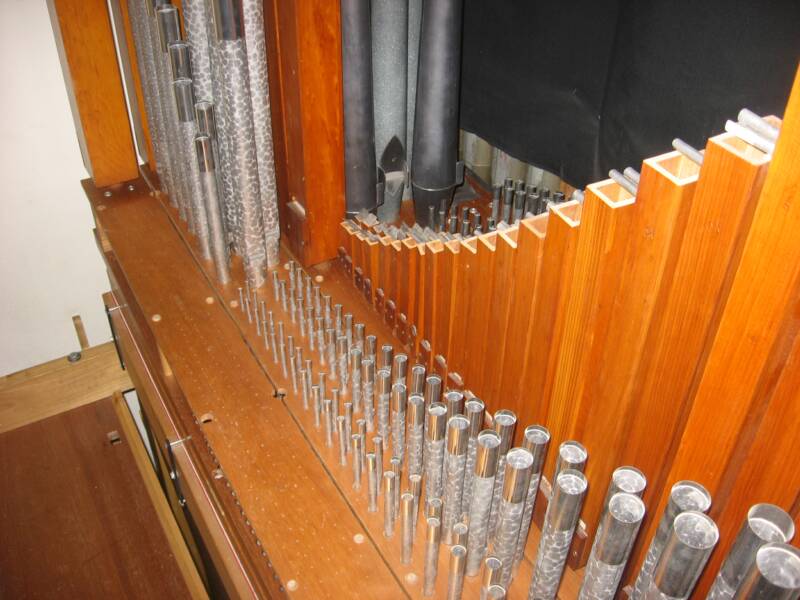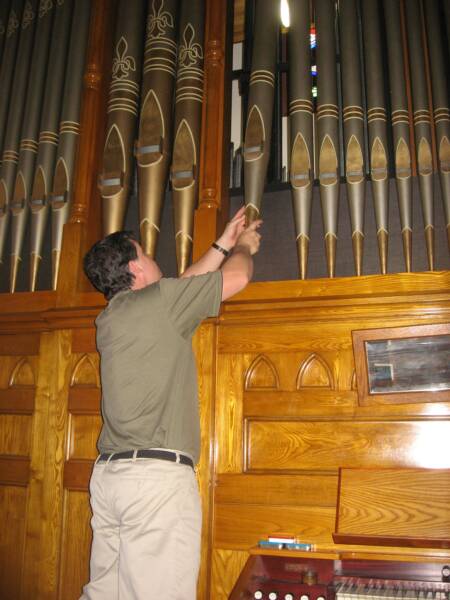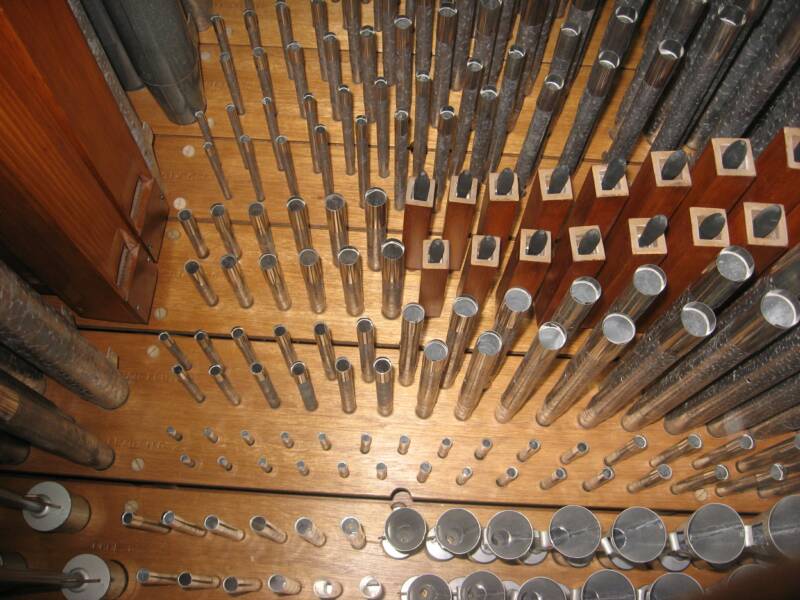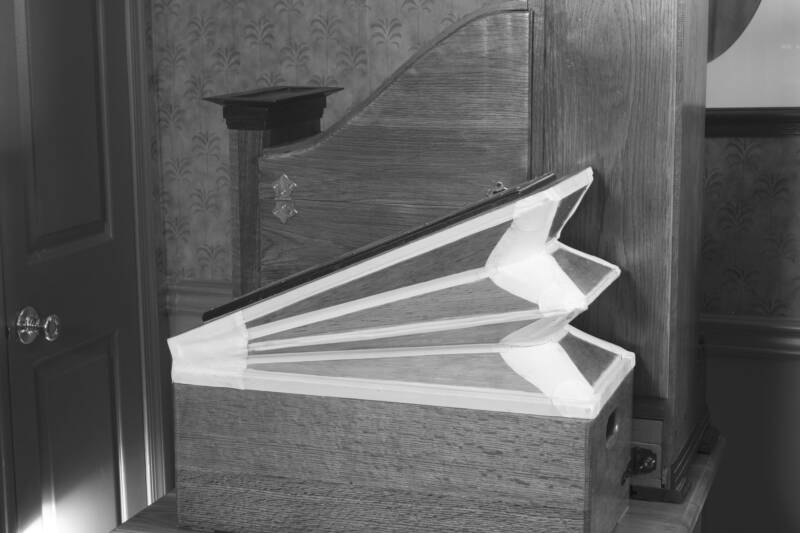





The restoration or “rebuilding” of pipe organs can take many forms. From a simple replacement of leather action parts (re-leathering), to major mechanical repairs and tonal additions, the scope of each project is tailored to meet your needs.
Restorations
How do we begin?
We will schedule an appointment to discuss your needs and inspect the instrument. We will then make recommendations accordingly. These will be presented in writing, usually with helpful photographs, and it is also recommended that we meet with your committee to discuss the work, scope, and timeline. Pipe organs involve a great deal of labor, and therefore cost. You should know what to expect, and it is important to us that we have a good working relationship with our customers.
So what's in a name?
We do not feel that an instrument's merit is based solely on its name plate. You must determine if the organ you have is meeting the needs of your congregation. There are many instruments that have survived without alteration that should be preserved as they are. Over the years, we have come across organs which have been altered greatly, while still retaining the original builder's name plate. We like to evaluate an instrument for the qualities it possesses, rather than simply who made it. Once the tonal character or mechanism of an organ is changed, (unless by the builder) it is no longer a representation of that builders work. We will provide our honest opinion based on our experience, both as organists and builders.
Do organs need to be cleaned?
Yes, they do. Dirt and dust settling in organs over many years can adversely affect the speech and tone of the pipes, as well as begin to cause mechanical problems in some cases. Reeds (trumpets, oboes, etc) are particularly susceptible to particles falling down inside the resonators. We have even found insects, birds and bats in large pipes. A cleaning does not necessarily mean the organ needs major mechanical work, but depending on the amount of foot traffic in the room, they should be cleaned every ten to twenty years.
Cosmetic/Aesthetic work
It is a treat when we are able to give the utmost attention to every part of an instrument, adding new fresh coats of shellac to even the structural lumber supporting the organ, making the organ look like it was installed yesterday. This, however adds little to the tonal quality of the organ, and adds great cost to the job. We feel that in these times, Churches would be wise to put their funds into the necessities, rather than cosmetic work which only the organ tuner will see. Use your money where it will do the most good! The organ needs only to be clean and in good order.

Great division after cleaning


Swell division after cleaning

Bellows detail from table organ.